Table of contents
- Kit superbikes in comparison Tuning for hobby racers
- Kawasaki ZX-10R
- Difficult: availability of the kit parts
- Kawasaki ZX-10R – mobile and balanced
- BMW S 1000 RR
- BMW drives sharply, almost like a 600
- Yamaha YZF-R1M
- Fastest lap with a Yamaha R1M
- Also only three “Order runs” per year
- Conclusion
- Kawasaki ZX-10R
- BMW S 1000 RR
- Yamaha YZF-R1M
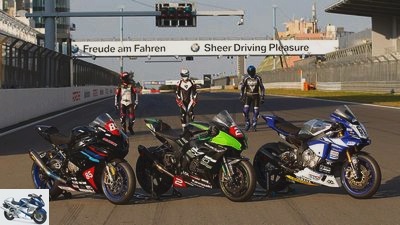
www.bilski-fotografie.de
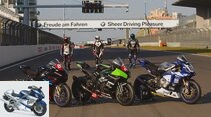
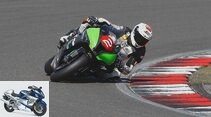
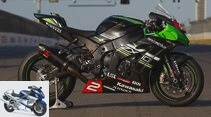
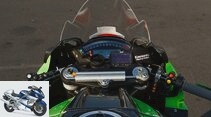
26th pictures
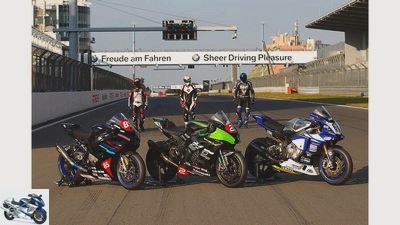
www.bilski-fotografie.de
1/26
The kit superbikes Kawasaki ZX-10R, BMW S 1000 RR and Yamaha YZF-R1M in comparison test.
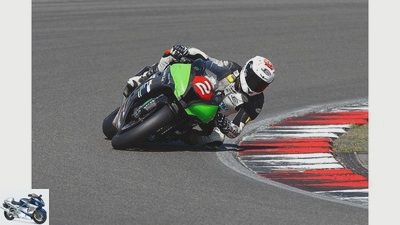
www.bilski-fotografie.de
2/26
Kawasaki ZX-10R
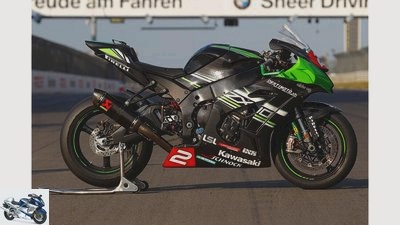
www.bilski-fotografie.de
3/26
Kawasaki ZX-10R
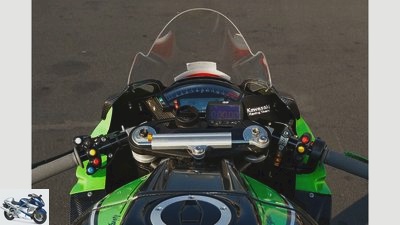
www.bilski-fotografie.de
4/26
Extensive Kawa command center with phenomenal wind protection through the MRA racing shield. The steering damper is controlled mechanically instead of electronically as in the series.
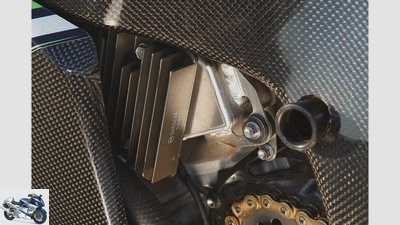
www.bilski-fotografie.de
5/26
The alternator regulator, which is moved to the front, sits above the oil catch tank and improves cooling. The additional tank prevents oil from being sucked in when you brake hard.
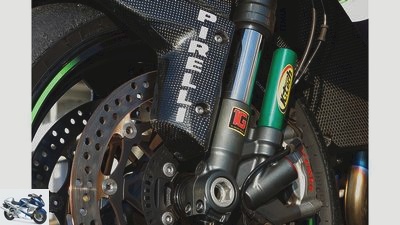
www.bilski-fotografie.de
6/26
Two marks very good: the fork with the K-TECH cartridge responds even better than the already good series part, the brake bites hard.
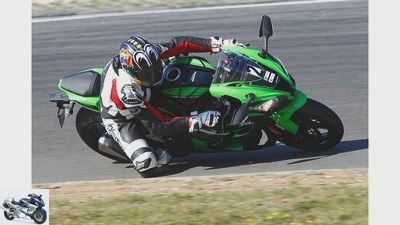
www.bilski-fotografie.de
7/26
A good four seconds lie between the series machine and the kit bike. The street model is much more sluggish in handling, lags behind in the draft (originally long translated) and is less full, the strut is underdamped.
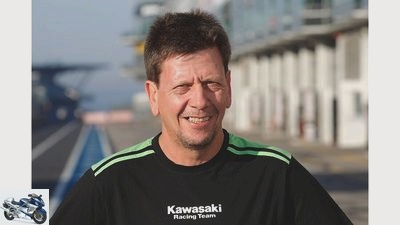
www.bilski-fotografie.de
8/26
Carsten Haufe, Kawasaki Germany: “What we have built with the kit parts here is pretty much the equivalent of an IDM superstock motorcycle”
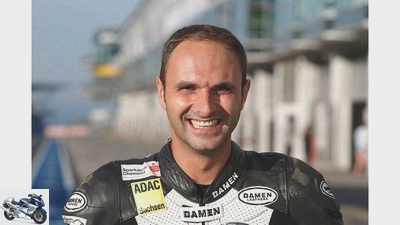
www.bilski-fotografie.de
9/26
Arne Tode, ex-Moto2 World Championship rider: “I feel really good on the Kawa. This is how fast driving is made easy! “
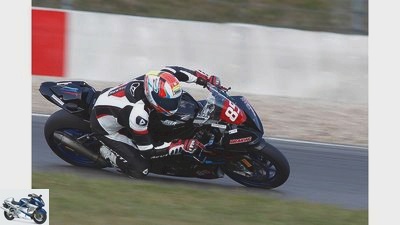
www.bilski-fotografie.de
10/26
BMW S 1000 RR
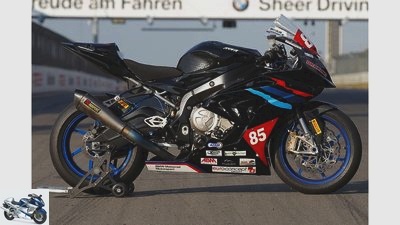
www.bilski-fotografie.de
11/26
BMW S 1000 RR
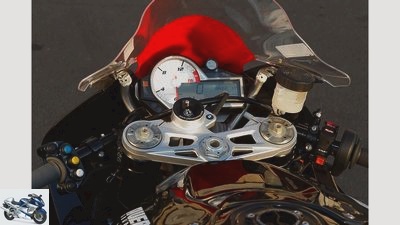
www.bilski-fotografie.de
12/26
Well-known cockpit of the Bavarian. A rocker arm has been artfully integrated into the recess for the ignition lock.
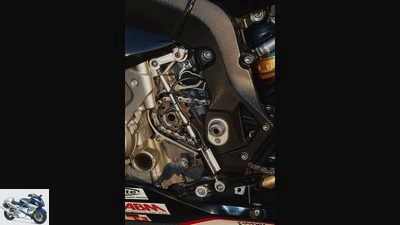
www.bilski-fotografie.de
13/26
Good: The automatic switch (with blipper function) from Lohmann requires little foot strength. In contrast to the series part, it does its job even when the throttle valve is not 100 percent closed, which helps to save concentration in the stress of racing.
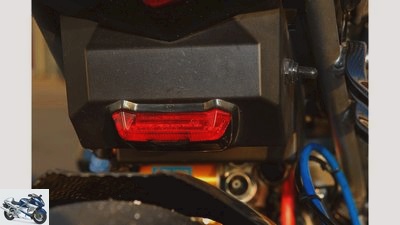
www.bilski-fotografie.de
14/26
According to the IDM regulations, the machine must have a rear light, for example because of poor visibility in the rain.
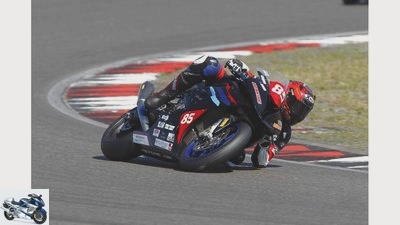
www.bilski-fotografie.de
15/26
Arne Tode: “Of the three machines, the BMW S 1000 RR is closest to the production version for me”
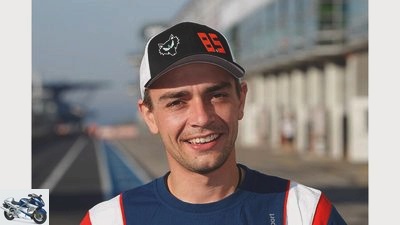
www.bilski-fotografie.de
16/26
Bjorn Stuppi, IDM Superstock 1000 pilot: “We neither need a special control unit nor a cable harness, the Race Calibration Kit 3 is sufficient”
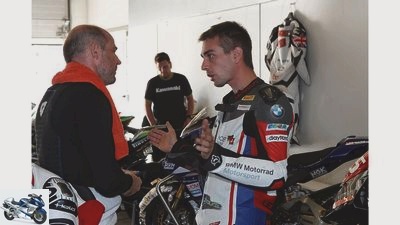
www.bilski-fotografie.de
17/26
There is a need for discussion. Every modern superbike offers dozens of tuning and adjustment options, the kit versions even more. There is hardly a single truth about the ideal setup.
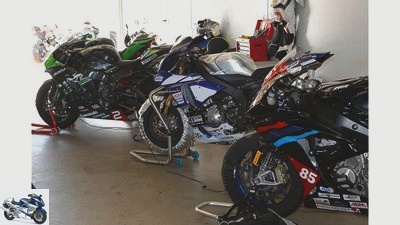
www.bilski-fotografie.de
18/26
Kawasaki ZX-10R, BMW S 1000 RR and Yamaha YZF-R1M.
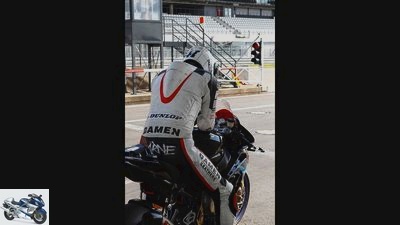
www.bilski-fotografie.de
19/26
Calm before the storm. Arne is the first to move out at Grun in order to have a free run.
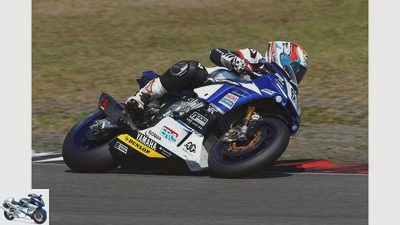
www.bilski-fotografie.de
20/26
Yamaha YZF-R1M
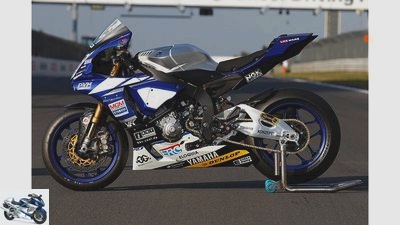
www.bilski-fotografie.de
21/26
Yamaha YZF-R1M
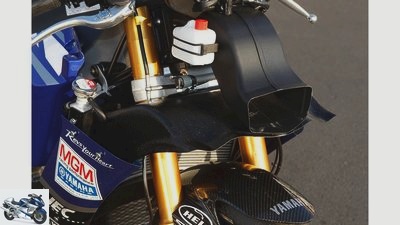
www.bilski-fotografie.de
22/26
In order to avoid leaks, the air inlet (wanner) closes precisely with the cladding. This is how the Ram-Air system works optimally.
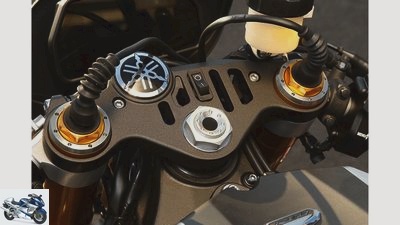
www.bilski-fotografie.de
23/26
The ignition lock was replaced by a toggle switch. All other components in the picture correspond to the series.
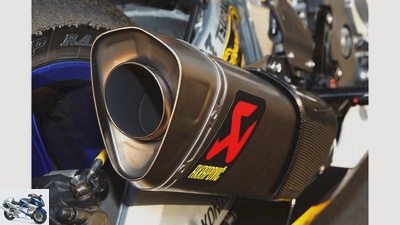
www.bilski-fotografie.de
24/26
The Akrapovic system provides a significant weight advantage compared to the standard exhaust, as there is no need for a heavy collector, for example. Despite the 98 dB limit, we are within the tolerances at the Nurburgring.
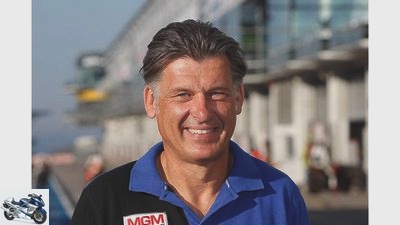
www.bilski-fotografie.de
25/26
Michael Galinski, Head of MGM Racing Performance: “The kit software is relatively simple and clear. you have to get used to something like that ”
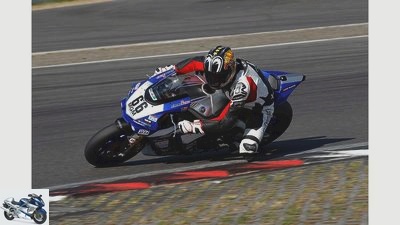
www.bilski-fotografie.de
26/26
Arne Tode: “More power than in series and a much more polished engine characteristic. Well done!”
motorcycles
Kit superbikes in comparison
Kit superbikes in comparison
Tuning for hobby racers
Content of
By what factor can the power of a superbike be increased with freely accessible factory tuning parts? PS brings together three kit bikes on the Nurburgring GP track for an offensive against the stopwatch.
Tobias Munchinger
09/14/2016
Nurburgring GP track. 35 degrees. We have tightened material with us and two days to taste it during the MOTORRAD action team training on the GP course. In box three there is a BMW S 1000 RR, one Kawasaki ZX-10R and a Yamaha YZF-R1M ready to hunt for lap times. The bikes are not off the shelf, but are equipped with kit parts and free of unnecessary ballast for road traffic. Over-the-counter factory accessories are used on the motor and electronics side. Because we don’t want astronomically expensive World Cup hits or prototypes, but functional material for the ambitious trackday driver and hobby racer.
Buy complete article
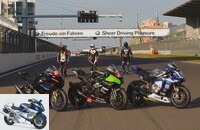
Kit superbikes in comparison
Tuning for hobby racers
14 pages) as PDF
€ 2.00
Buy now
Kawasaki ZX-10R
All signs point to green when horsepower test driver and ex-Moto2 rider Arne Tode begins his first turn on the Kawasaki ZX-10R. “It’s actually an IDM Superstock motorcycle, as used by Roman Stamm,” explains Carsten Haufe from Kawasaki Germany. Carsten built the machine together with Roman Raschle from the IDM team Schnock, tuned the chassis and wrote the mapping. The heart of the factory tuning is the kit ECU plus racing wiring harness. This means that the standard engine runs without electronic Euro 4 ankle cuffs.
On our test bench, the Kawasaki ZX-10R in conjunction with the Akrapovic complete system produces 201 hp on the crankshaft. The value sounds a lot less spectacular than it comes across on the track outside. The Kawa pushes hard from the early middle speed range and is much more motivated to accelerate than you know from the production version. Every single horsepower seems to be converted one to one into propulsion, the precise response behavior helps. The traction control is also more accurate than on the production motorcycle. The kit control unit enables much more precise coordination via the special software. Each level (there are five in the series) offers the possibility of fine-tuning via laptop in a range from plus five to minus five. We are using the mapping that was specially devised for the Nurburgring at TC level three and we are extremely satisfied with it. When you apply the gas from the Dunlop curve, you can feel the wheelspin and register very fine control intervals. This quickly creates confidence in the grip on the rear wheel and helps you achieve faster pace.
Difficult: availability of the kit parts
Anyone who is familiar with the Kawasaki kit parts will get good material in their hands to seriously sharpen the ZX-10R. What is the catch? The Japanese follow a stringent way of handling the matter and weighting it politically. Protection against manipulation, warranty and fear of recourse play a role. According to those in charge from Akashi, the kit parts only belong in the hands of professional teams. “There were already kit control units and accessories for the earlier Kasasaki ZX-10R and ZX-6R models, but nobody knew that,” says Carsten Haufe, who is mainly responsible for motorsport at Kawasaki Germany. “It has only been since you got the ball rolling after the last presentation in Sepang through reporting that the topic has started making waves.”
The difficulty lies in the availability of the kit parts. It is only possible to order the products through dealers on only three dates a year. Some now have stocks and specialize in building kit bikes. However, this requires a certain amount of know-how. Not all dealers are familiar with the complex electronics. If you are interested, possible contact points can be found by email at info@kawasaki.de.
Given the potential that lies dormant in the Kawasaki ZX-10R, it is a real shame that there is no interest in better support for amateur racing in Japan. “The motorcycle can do more than I can right now,” says Arne after a few laps, takes the time to take a short break and then sets off again. A little later, the stopwatch shows a lap time of 2.01.251 minutes.
Kawasaki ZX-10R – mobile and balanced
The strength of the Kawasaki ZX-10R lies primarily in its drivability and balance. Although the machine looks bigger and heavier than other current superbikes, it shows excellent handling and a high level of neutrality. “With the ZX-10R, I can be on the road quickly and at the same time totally relaxed,” says Arne. Above all, the professional praises the steering behavior and the transparency of what the front wheel does. “If you think you are too late, you fold the motorcycle down even without the brakes and it goes exactly where you want to go.” Arne reports that he has a great feeling when leaning on the Kawasaki ZX-10R. If the radius doesn’t fit, he just leans in with the upper body and the thing pounds around the corner.
After the traction control, the blipper (activated via the ECU) is another electronics boon. It worked flawlessly over the two test days. In addition, the fork of the Kawasaki ZX-10R with the cartridge from K-TECH responds incredibly well, and the brake is a stunner. It delays vehemently, but progressively and nicely predictable. Because of the high braking stability, the Zehner gets a lot of time in the braking zone. The ABS was removed on the Kawasaki, just like on the other two kit bikes, or, in the case of the R1, shut down. The main reasons for this are always the same: It saves weight, eliminates a possible source of error and gives a more direct feeling.
In addition to the kit bike, we have a standard Kawasaki ZX-10R with us. We deactivate the ABS using a separate plug (dongle). For his fast lap, Arne switched off the series traction control completely. In the end, there are a good four seconds between the kit bike and the production machine. “The difference is really blatant,” says Arne. Kudos for the kit bike, which shows no real weakness in this test and is as easy to ride as a children’s bike.
BMW S 1000 RR
It continues with the BMW S 1000 RR by Bjorn Stuppi. He competes with the machine in the IDM Superstock for the Bergau team. Like the Kawasaki ZX-10R, the BMW engine is in series production. The test stand spits out 202 hp. Forced racers can order so-called stage engines from BMW, which have more output from the factory. Stuppis S 1000 RR was only matched with the HP Race-Calibration-Kit 3. The BMW does not need a special ECU or racing wiring harness. The so-called power kit (special mapping) is used in conjunction with a complete Akrapovic system. “There is no point in having a lot of power and not being able to implement it afterwards, which is why we are currently only working with the calibration kit and setting the software as we need it. We can use it to fine-tune traction control, influence the amount of fuel injected or change the electronic engine brake. It’s all done in a user-friendly way using a laptop. In addition, BMW’s own racing department is always on hand to provide HP with help and advice, ”explains Stuppi. BMW has its own team that deals exclusively with the sale of HP tuning parts and advice. Customers can contact practically any BMW dealer and receive a hotline directly to Munich. The Japanese could take an example from this type of factory support.
BMW drives sharply, almost like a 600
Outside on the track, the BMW S 1000 RR effect occurs immediately. There is hardly anything that the pilot should seriously aim for. The motto is sit down and shoot. The BMW is and remains a guarantee for fast lap times. In contrast to the Kawa engine, the Bavarian in-line four looks livelier and seems to rev up easier. Especially up Hatzenbach in the direction of the NGK chicane, the BMW is more light-footed, the gear ratio in the upper gears is ideal. In general, the S 1000 RR scores with its agility. The machine tends to be sharp, almost like a 600, always with a lot of speed. As a side effect, there is a slight unrest, the front tends to fidget when accelerating hard.
Arne: “The brakes are incredibly aggressive. Madness, as it bites with a finger when you carefully put it on. Still, I can’t brake the machine quite as hard as the Kawasaki ZX-10R. But I don’t have any feedback from the front, and I don’t really trust the front wheel when I lean. ”Due to the bend in the Hatzenbach, the BMW S 1000 RR is less tired than the ZX-10R. Arne says he’s definitely losing time here. The pros and cons are balanced, with the stopwatch showing a fastest lap of 2.00.897 minutes to 2.01.251 for the Kawasaki.
Yamaha YZF-R1M
Our third in the league is that Yamaha YZF-R1M. It comes straight from the hands of Michael Galinski from the IDM team Yamaha MGM. If anyone knows the R1, it’s him. A kit control unit and a racing wiring harness are also used on the R1M. In addition, the engine was equipped with other YEC parts (stands for Yamaha Engineering Company). The result is a lively 207 hp with a gross vehicle weight of 186 kilograms. “We save most of the weight with the Akrapovic complete system and the kit wiring harness. All the plugs and add-on parts for road use are no longer necessary, and the motorcycle is tidier, ”says Galinski. At the same time, the experienced racer warns against approaching the construction of such a machine with too naive eyes. “The installation of the wiring harness is not that easy, despite the understandable kit instructions, solid screwdriving skills do not hurt,” says Galinski.
But it’s worth it. The kit Yamaha YZF-R1M delivers fat torque in the middle and runs the most powerful of all three test motorcycles into the limiter. Arne says: “You don’t have to listen to the speed so much, you just step on the gas. That always fits! ”On the production motorcycle, the throttle response in A mode is rough, while the kit bike accelerates super smoothly and still goes straight to the gas. The wheelie control is a poem. With the front wheel slightly raised, the R1M dashes out of the Coca-Cola curve onto the home straight and then very gently puts the front wheel down again without the driver having to close the gas. Without a special mapping, nothing works with the R1 either. Galinski: “The kit ECU comes with zero mapping as standard. It could be optimized on the test bench, but it works satisfactorily this way. We can set a lot with a laptop. For example, reducing the engine brake, which is quite strong in the production bike, which improves drivability. “
Fastest lap with a Yamaha R1M
To cut a long story short: Arne Tode sets the fastest lap time in the Yamaha YZF-R1M in 2.00.331 minutes. Of all three kit bikes, the Yamaha demands the most dedication. It takes a short time to get to know each other because you sit comparatively high on the motorcycle. In addition, it feels completely different when turning than the Kawasaki ZX-10R or the BMW S 1000 RR. Just don’t give the steering impulse too early, otherwise you will rattle over the curbs.
“What is striking is how nicely the rear wheel leads when braking hard and at most only minimally merges into the slide,” says Arne. The racer complains about the grip on the front wheel and the somewhat bucking front. First the suspicion falls on the hard tires (Yamaha front with Dunlop Slick in 343 compound, rear MS0. Kawa and BMW front and rear with Pirelli Diablo Superbike SC1).
Also only three “Order runs” per year
However, it is not the tire, but too much spring preload on the fork, which we then reduce. After that, Arne only says: “It’s impressive how well the semi-active chassis works. If you were to aim for a lap time of less than two minutes, you would have to invest a lot of fine-tuning work so that the machine is fuller. Especially when turning quickly from right to left, as in the Schumacher-S or the NGK-Schikane, movement comes from the rear when you step on the gas digitally. the Yamaha YZF-R1M from MGM is already in a very good position.
With the availability of the YEC parts, it looks similar with Yamaha as with the kit parts from Kawasaki. The products can be ordered through any Yamaha dealer on three “order runs” a year. In view of the offered performance, it will definitely be worthwhile for one or the other hobby racer.
Conclusion
It’s amazing how close the BMW S 1000 RR, Kawasaki ZX-10R and Yamaha YZF-R1M are in terms of performance. At the Nurburgring, everyone moves within a time window of one second, but drives completely differently. What suits you better depends largely on your personal taste. You could choose one of the three motorcycles according to your favorite color and would have made a good decision.
Kawasaki ZX-10R
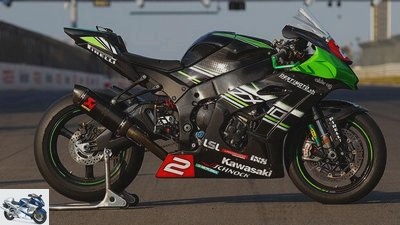
www.bilski-fotografie.de
Kawasaki ZX-10R
Kit parts
- Kit-ECU including software, wiring harness and connection cable: approx. 2300 euros
Other accessories / changes
- LSL Sport Match handlebars: 179 euros
- LSL 2-Slide footrest system: 419 euros
- Brake and clutch levers from LSL: € 99.95 each
- Akrapovic complete system EVO: 2,491.60 euros
- Akrapovic exhaust bracket EVO: 263.35 euros
- Chain DID (ERV3 520): 170 euros
- Supersprox 520 chain sprocket: 35 euros
- Fork cartridge K-TECH 20DDS: 2,120 euros
- K-TECH 35DDS PRO shock absorber: 1,480 euros
- Handlebar fittings STM: around 600 euros
- Carbonin Avio Fiber fairing, complete with quick-release fasteners: 810 euros
- Datalogger Memotec including GPS module: around 2,500 euros
BMW S 1000 RR
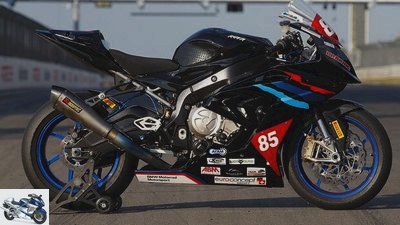
www.bilski-fotografie.de
BMW S 1000 RR
Kit parts
- HP Race Calibration Kit including activation code: 1,086.04 euros
- HP Race Power Kit (mapping for Akrapovic system): 420.42 euros
- HP Race Datalogger: 600 euros
- HP Race seat: 350 euros
- HP forged wheels: 1,225 euros
Other accessories / changes
- Brake discs (WK117R) and brake pads (P1R) from Braking: 441 euros and 285 euros
- ABS expanded
- Braided steel brake lines, footrest system and various other add-on parts from ABM: around 900 euros
- Akrapovic Evolution Line complete system: 2,435 euros
- Racing fairing from Presser and Kuhn: 696 euros
- Shift assistant from Lohmann: Price on request
- Alpha Racing rear frame: 290 euros
- Alpha Racing engine cover: 244 euros
- Alpha Racing crash pads: 59.50 euros
- MRA racing windshield: 84.89 euros
- Ohlins closed cartridge including fine adjustment from KTS (Klaus Thiele Suspension): 2,350 euros
- Ohlins TTX shock absorber: 1,460 euros
Yamaha YZF-R1M
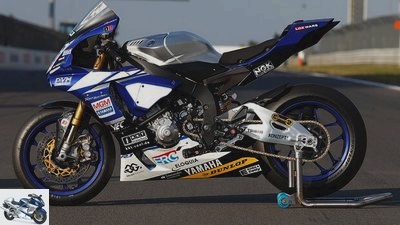
www.bilski-fotografie.de
Yamaha YZF-R1M
Kit parts
- YEC camshaft inlet: 803.58 euros
- YEC camshaft outlet: 803.58 euros
- YEC camshaft gears: 525.96 euros
- YEC valve springs: 949.69 euros
- YEC velocity stacks: 2,204.48 euros
- YEC wiring harness: 657.46 euros
- YEC-ECU: 572.97 euros
Other accessories / changes
- ABS shut down
- Racing fairing from Wanner: Price k. A., custom made
- Complete system Akrapovic Evolution Titan: 3,429.95 euros
- Gilles Billet footrest system: € 679.95
- MRA racing windshield: 84.89 euros
Related articles
-
Motorcycle anti-lock braking systems in a comparison test
Jahn 13th pictures Jahn 1/13 The relations shift on the wet test track – in the truest sense of the word. Jahn 2/13 In conclusion, it can be said that…
-
Comparison test: Kawasaki ZX-6R in three expansion stages
Jahn motorcycles Comparison test: Kawasaki ZX-6R in three expansion stages Comparison test: Kawasaki ZX-6R in three expansion stages Queen, King, Ace…
-
Comparison test BMW K 1300 R, Buell 1125 CR, Suzuki B-King, Yamaha Vmax
K 37 pictures Yamaha 1/37 First look at the device from all sides… Yamaha 2/37 Yamaha 3/37 Yamaha 4/37 Yamaha 5/37 Yamaha 6/37 Yamaha 7/37 What is…
-
Comparison test: Yamaha YZF-R6 in three expansion stages
Jahn motorcycles Comparison test: Yamaha YZF-R6 in three expansion stages Comparison test: Yamaha YZF-R6 in three expansion stages R6 series vs. Cup vs….
-
IDM superbikes on the Nurburgring
SUPERBIKE * IDM Sports & scene Motorsport IDM superbikes on the Nurburgring IDM 2017 Nurburgring SBK1000 Superbike 1000 The largest IDM class, the…
-
Generation comparison Yamaha FZS 600 Fazer-FZ6 Fazer-S2
Jahn 15th pictures Yamaha 1/15 Yamaha 2/15 Yamaha 3/15 Yamaha 4/15 Yamaha 5/15 Yamaha 6/15 The slightly more complex S2 version of the Fazer has 98 hp as…
-
Purchase advice – Nine current superbikes in a bargain check
fact / sorcerer11 – Fotolia 37 pictures fact 1/37 Sports fans were supplied with fresh material in 2015 – predecessors have to be removed and innovations…
-
Motorcycles with cornering ABS in comparison
Photo: fact 28 pictures archive 1/28 BMW took on the pioneering role when it came to the spread of ABS in motorcycles. The following models want to show…
-
Technology comparison of new supersport motorcycles 2015 – part 2
MOTORCYCLE 30th pictures manufacturer 1/30 Aprilia RSV4 RR. Aprilia is still quite stingy with pictures of the new RSV4 RR. manufacturer 2/30 Kawasaki…
-
Comparison test between Suzuki DL 1000 V-Strom and Yamaha TDM 900
Artist motorcycles Comparison test between Suzuki DL 1000 V-Strom and Yamaha TDM 900 Comparison test between Suzuki DL 1000 V-Strom and Yamaha TDM 900…